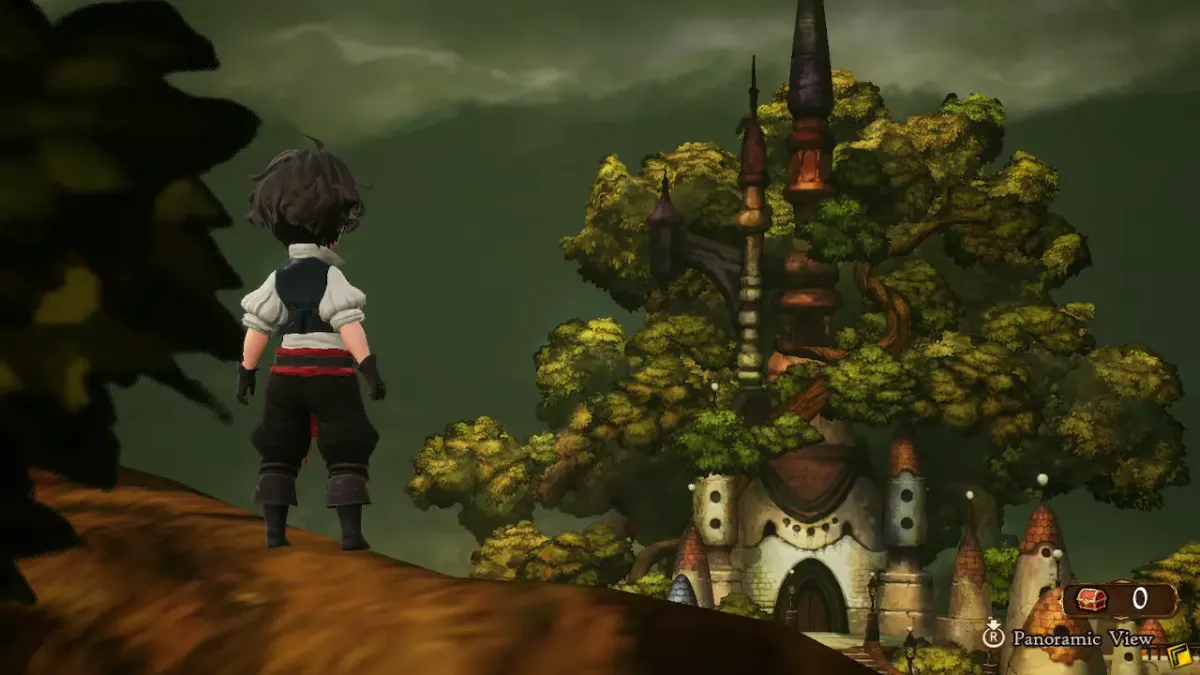
After a rogue wave knocks him from his vessel, Seth finds himself in the care of Gloria and Sir Sloan, the princess of the fallen kingdom of Musa and her guardian. She is on a quest to find the four elemental crystals and use them to seal away the Night’s Nexus once more, a calamitous force that will destroy the world. While he investigates the beach he washed up on, Seth encounters Elvis and Adelle, two travelers searching for powerful stones called Asterisks, which give the holder special abilities, to read a mysterious book in Elvis’ possession. After confronting a pair of Asterisk holders who kidnapped Gloria, Seth is blessed by the wind crystal and becomes its chosen Hero of Light, a warrior destined to challenge the Night’s Nexus. Gloria will no doubt encounter more Asterisk holders on her journey, so the four join forces with their purposes united.
If this sounds like a generic Final Fantasy plot to you, you’re right! Bravely Default essentially carries the torch of Final Fantasy V, complete with a job system, crystals, four party members, the whole shebang. Personally, I’m a sucker for literally any game with a job system and the amount of customization it offers, so I immediately fell in love with the series. Combine that with a charming cast of characters, a fantastic story, and an incredible soundtrack and it instantly became one of my favorite games. Sure, it and Bravely Second have their problems (specifically having to fight the same four bosses repeatedly), but you could get through them with a bit of patience and the game would be even better afterwards. Bravely Default II (still not sure why it’s not called Bravely Third) seeks to solve these problems and make the game more accessible to newcomers with a new cast of characters, world, jobs, and even a refreshed battle system. Does it live up to the legacy of the previous two games as well?

When you start up Bravely Default II, you’re asked to name the protagonist. Already this is a big departure from the rest of the series as Tiz and Yew were established characters with set personalities and motivations. I went with the default name, Seth, and while there is somewhat of a reason for this we’ll get into later he’s unfortunately left with a shallow character. We know he’s a very kind individual, a bit shy, and is a sailor but… that’s about all you learn about him. Sure, I like him but I barely know anything about him! This problem is compounded by the fact that the rest of the party gets so much character development, so Seth feels even less like a character by comparison. Elvis is incredibly charismatic, but parties a bit too hard at the tavern. Adelle has a strong sense of justice and will do anything to help those in need, including putting her life at risk or charging into a situation she’s not prepared for. Gloria is fully dedicated to her mission and the greater good, often to the detriment of her own wants and needs. Seth, meanwhile, has kind of a silent protagonist problem, he’s got about as much personality as Link, Chrono, or a Persona protagonist but since he actually speaks quite a bit (with some great voice acting, mind you) the parts of his character the game neglects to fill in stand out way more.
The game also makes one small change to the battle system that completely changes how you approach combat, being when turns actually take place. See, in Default 1 and Second you would select actions for your entire party at once, then watch a turn play out with characters taking their selected actions depending on their speed. In 2, however battles have a more similar structure to the Active Time Battle system seen in Final Fantasy IV on, when a character’s turn comes around they can act immediately. This makes combat more reactionary, which isn’t inherently a problem. There are tons of fantastic RPGs that use a similar structure, but I find this undermines what made the previous two games so fun: customization.
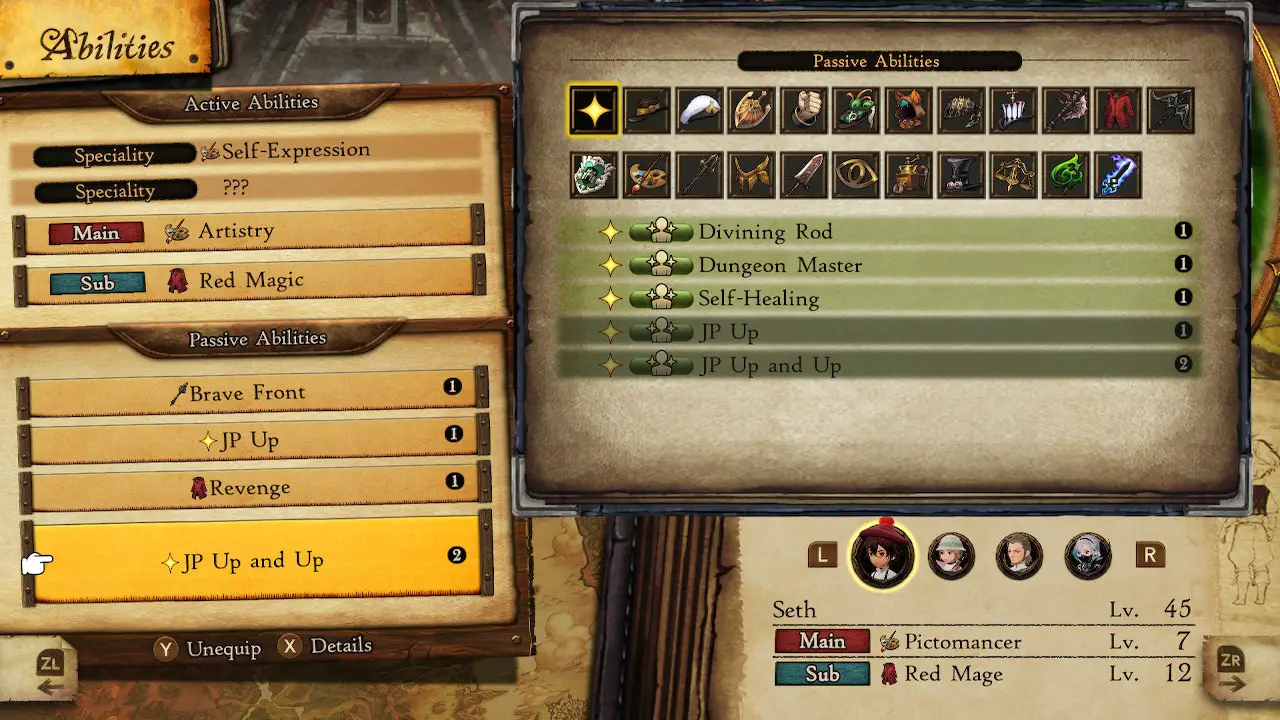
To explain what I mean, let’s go over the job system and how it works first. You get new jobs by defeating Asterisk holder, and can set a character’s primary and secondary job in the menu. Jobs control not only what abilities you can use in battle, such as White Magic or Gambling, but also what weapons you are proficient with along with granting various stat bonuses. The fun of this system comes partially from mastering a plethora of new skills and figuring out how to get them to work together. For example, I had Adelle using the Monk job which can unleash powerful attacks at the cost of HP or even Brave Points. She could do some serious damage, albeit infrequently needing to pause and be healed or being unable to act if her BP went into the negatives. Later on I swapped her main job to Beastmaster, keeping Monk as her sub job. Beastmaster learns an equipable ability called “Sub Job BP Saver” which reduces the BP cost of all abilities that use that resource by 1. Now I could use her most powerful Monk attack, Pressure Point (which ignores armor and Default status) literally for free. There are a lot of synergies like this to discover and make your characters how you choose, it adds another layer of forethought to the entire game.
Unfortunately, the change in turn structure forces me to fight most battles more defensively. For the first two chapters of the game, I barely even used the titular Brave and Default abilities to take turns in advance or stockpile them respectively. It was much safer and practical to just take one turn at a time, since I had no idea if say my healer would go down in a few seconds. You’re incentivised to take risks given how hard enemies hit and how relatively weak your party is at the start of the game. Normal encounters are easy enough to get through, but bosses on the other hand crank this up to 11, often killing most of your party in a single action when you’re at full health. Once I had a varied selection of jobs midway through Chapter 3, things got a bit more fun, I felt like I could actually strategize around these battles and had some satisfying yet close victories. However, I find it nearly impossible to defeat any of these bosses on the first try given two things: weaknesses and counters.
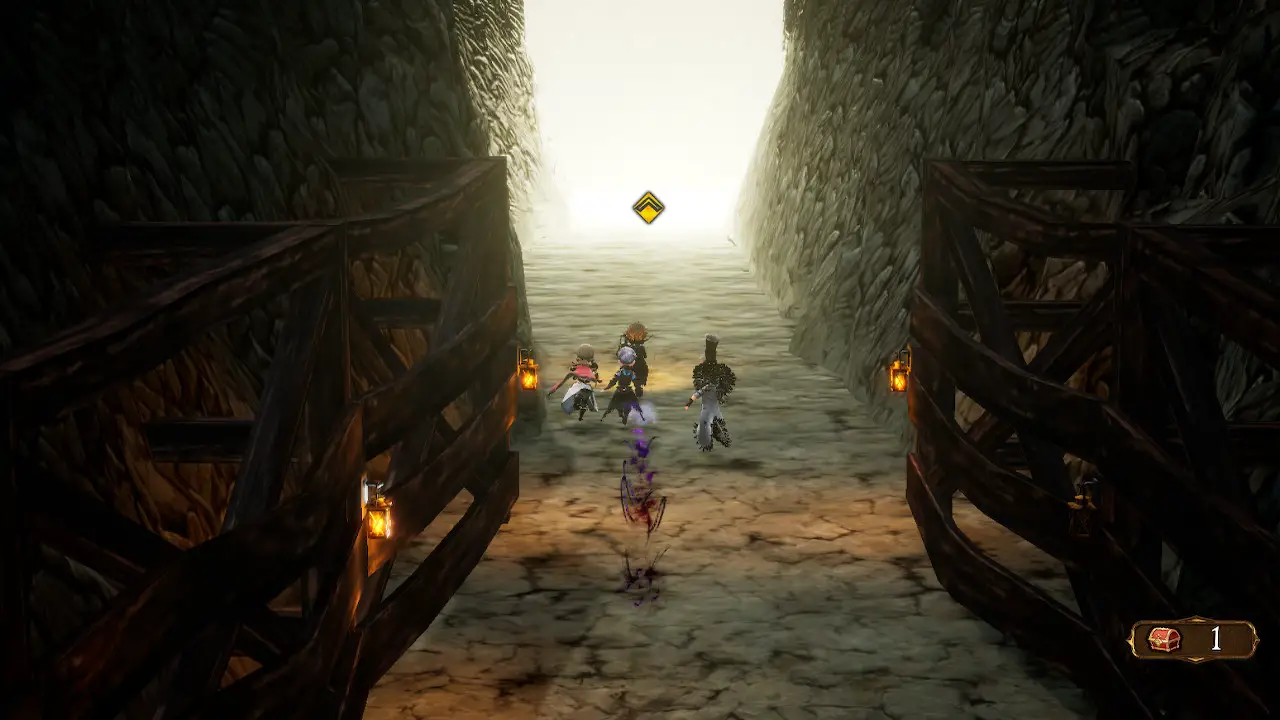
Exploiting an enemy’s weakness is more important than ever, in fact if you don’t do this you’ll barely do any damage to bosses. Strategies like my Pressure Point synergy will only carry you so far. So for most fights I would enter the battle, examine them, see that my current job selection wasn’t suited to the encounter at all, quit the game, and then take the fight seriously. Again, a trial and error approach to encounter design can and has worked in other games before, but it is completely ruined by counters. Most enemies have at least one counter, this can range from simply inflicting you with a status ailment when you hit them with a wind attack to gaining BP any time you do anything. I complained about these in the demo, as it feels like the game is punishing you for playing the way it encourages you to, but it’s ten times worse here. Basically every boss after a certain point has that Any Ability counter, so they act at least three times every time their turn comes around with absolutely no penalty. Something that was so satisfying about the previous two games is that enemies had to play by the same rules you did: use too much BP to rashly and you’re gonna get pummeled and that is simply not true here.
You may, like me, start out trying to make a party that can take on a wide variety of enemies, with someone to heal, someone to take damage and protect the party, someone to support the party, with all of them being able to dish out pain when needed. Eventually though, you’ll be forced to make your party conform to this structure: a pure healer, a tank to hopefully soak up damage but can’t deal any, a support/MP battery to keep everyone stocked, and finally a glass cannon damage dealer who WILL die every other turn. It sounds similar on the surface, but it offers a lot less freedom and depth.
I’ve been complaining a lot so far, but I did really like Bravely Default II. Well, two thirds of it anyway. The beginning is pretty slow, but once things open up around chapter 3 the game gets really fun. There’s a lot to explore and experiment with here, including optional dungeons and jobs. I spent a lot of time doing side quests, and I’m glad I did because it greatly extended the actually fun parts of this game. However, I also had to spend a lot of time grinding, both throughout and in one big chunk at the end of the game. If you want to see everything this game has to offer without pulling your hair out due to being killed instantly whenever an enemy feels like it, be prepared to grind in the final dungeon all the way to level 99 for about 5 hours. Sorry, I’m getting off track, I’m supposed to be talking about the good right now.
I had worried in the demo that the game didn’t have as much visual personality as Bravely Default and Bravely Second with the more detailed character models and areas. I’m happy to report that I was mostly wrong in that regard, the demo is just the least interesting area of the game. Towns like Halcyonia and Wiswald are drop dead gorgeous, and the more 3D environments are no slouch either. The locations might not be as out there as previous titles, but they’re still interesting in their own way. For example, Wiswald has been overrun with the sudden growth plants, so the citizens have had to rebuild the town to work around the foliage with most paths and staircases being replaced by gigantic roots. Almost every city has a problem like this that actually matters in the plot, which sells how important Gloria and company’s mission to recover the crystals truly is.
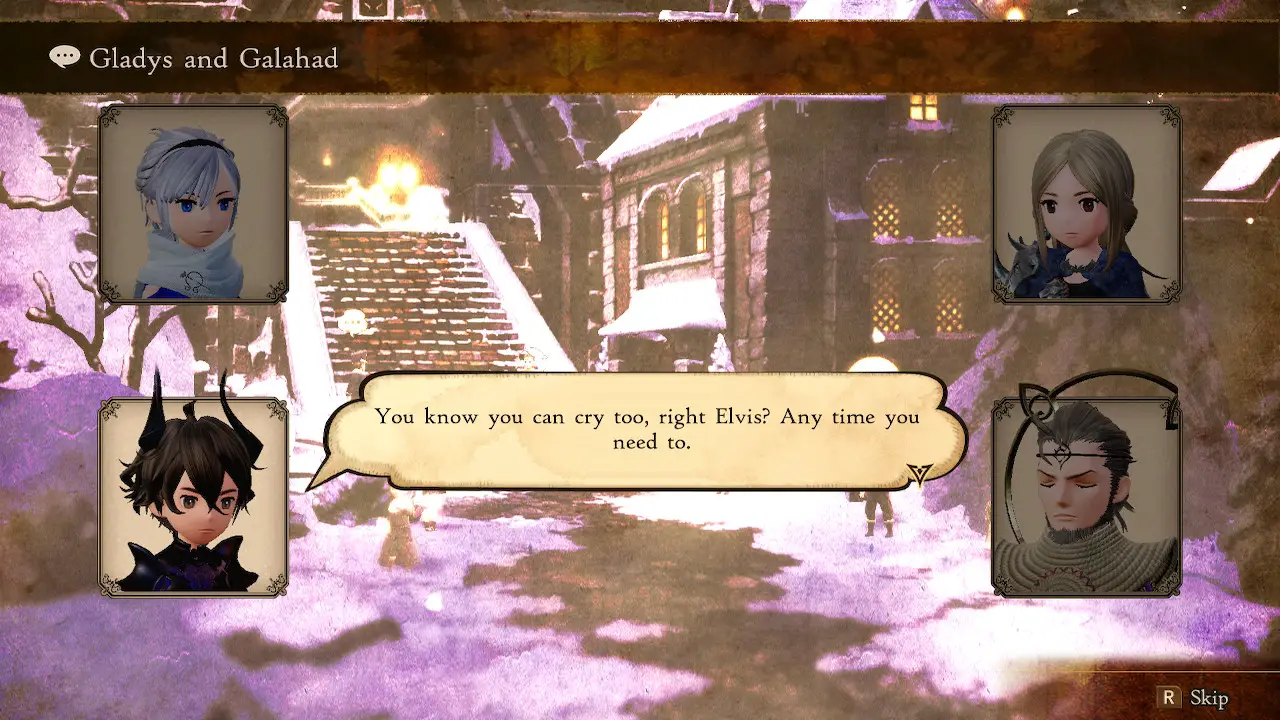
One stand out aspect of the Bravely series is that the games don’t just throw characters like the Asterisk holders out when the main plot is done with them, their stories continue in side missions and this holds true here for the most part. Not every character will come back for side quests, but those that do usually get more than one to flesh out their personalities and show you that they aren’t all bad. One of my favorites is Anihal, previous bearer of the Beastmaster Asterisk, who ends up helping the local government and running the gaming hall after events in chapter 2. She’s very likeable and honestly I kinda wish she would have joined my party at some point.
Revo is back in the composer role after being absent for Bravely Second, and the soundtrack is once again fantastic. While I found the music overall to not live up to the first game (there’s no Serpent Eating the Ground equivalent here, though there is a reprise of that song for some reason), but what it may lack in energy it makes up for in variety. This time around there are several Asterisk themes, world map themes, and even two battle themes. I never found myself humming along or noticing leitmotifs, but it’s still a step up from most game soundtracks and the final boss theme comes about as close as you can get to the first game’s musical nirvana.
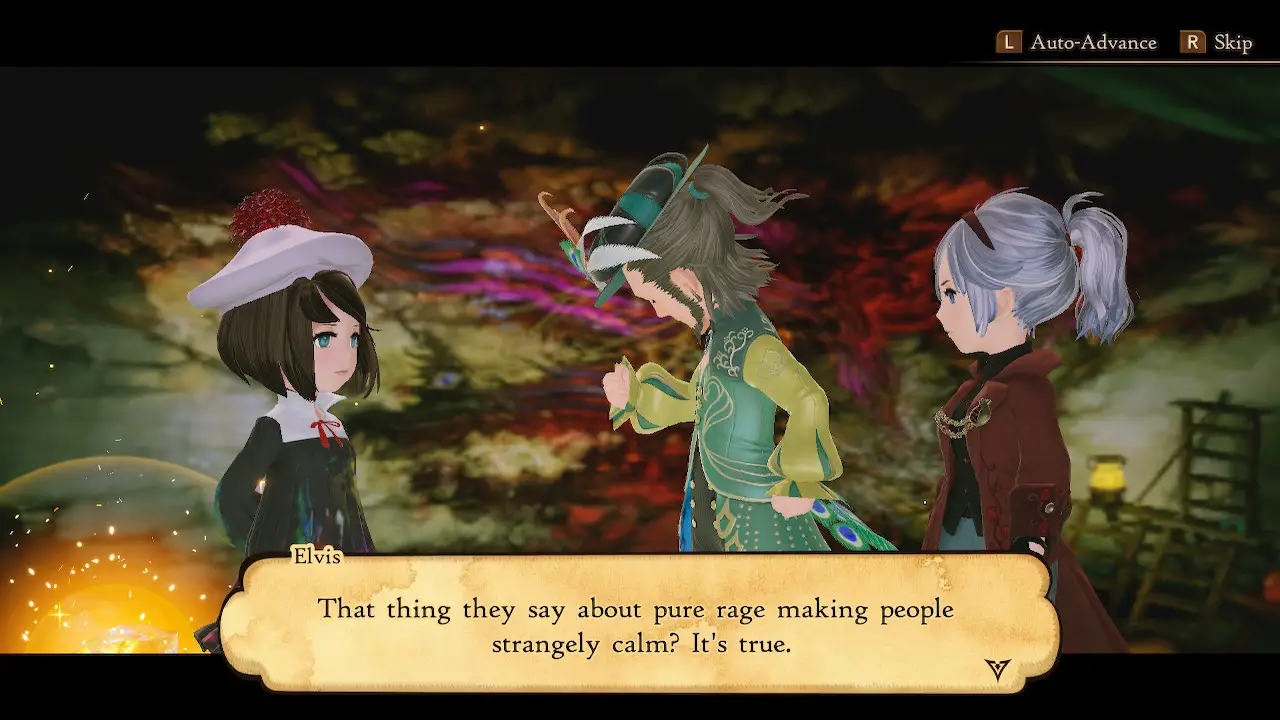
The game has some very nice quality of life features as well, for example you can now chain battles together for bonus Job Points by using an item of a monster type and encountering said monster on the field. Random encounters have been completely removed in favor of seeing them on the overworld. You can attack these enemies on the field by swinging your sword with Y, gaining 1 BP at the start of battle. It’s an odd but not entirely unwelcome change, though I still wish you could turn off encounters or even gaining XP, JP, and pg (the game’s currency, pronounced peeg). It’s disappointing people won’t be able to do level 1 runs of the game anymore, in fact there’s a lot of weirdly missing mechanics, like having no proper auto battle, fewer weapon types, overall fewer job skills to learn, and many more features. The optimize equipment function is present here, but it’s practically useless since it can’t take into account what role you want that character to play and seems to just set everyone as the tank. I also found several technical problems playing, that frequent stuttering from the demo never went away, the Party Chat (short conversations between your party) is unresponsive for whatever reason occasionally, and I noticed some missing textures and Z-fighting in a dungeon.
As much as I want to love Bravely Default II, like I said earlier the game completely falls apart in the final third. Once you recover the last crystal, the story stops being interesting or making much sense, the characters stop developing, and even the meta stuff the series is known for pulling feels much weaker here. I kept expecting a strong finale to explain why Seth was such a blank slate, why the crystals were suddenly running out of power, what the Night’s Nexus actually was, and why certain strange things happened in the story and that just… never came. That five hours I spent grinding to beat all of the endgame content felt less and less worthwhile the more I thought about it. I had gotten around the immensely frustrating enemy design, but for what? It’s definitely a game worth playing, but once you start feeling frustrated or bored, I’m sad to say you won’t miss out on much by simply looking up the ending online or even dropping the game entirely.
Bravely Default II
Good
Bravely Default II is a good RPG that undermines everything amazing the previous two games. The new battle style discourages risk taking and thus less freedom with the job system. The first 30 or so hours are great, despite a slow start in terms of gameplay, but the last 20 are too frustrating to be worthwhile and the story ends on an unsatisfying note.
Pros
- Great soundtrack
- Likeable characters
- Good story…
Cons
- ...Until the final third
- Battle system is very rigid
- Stop it with the counters
